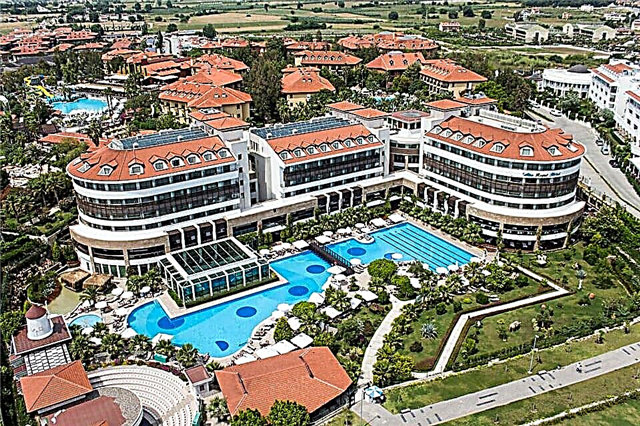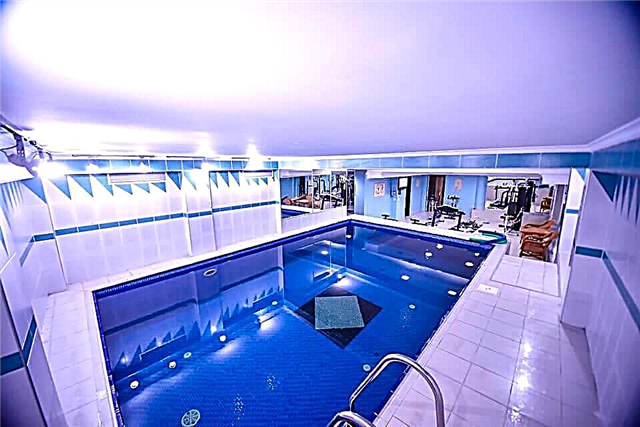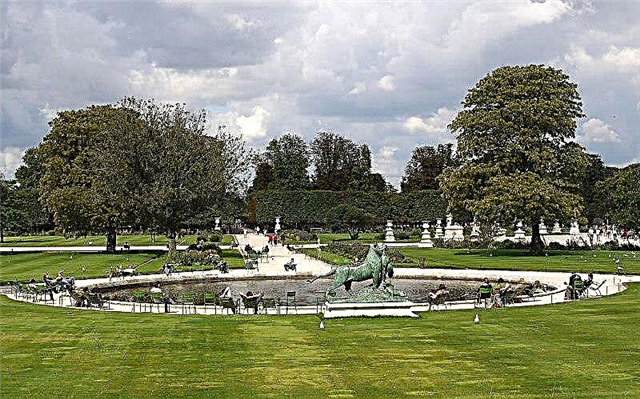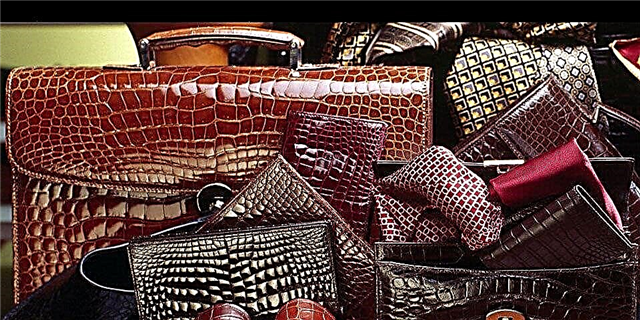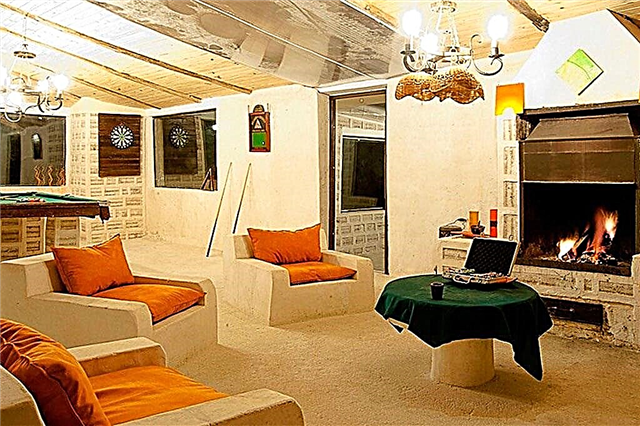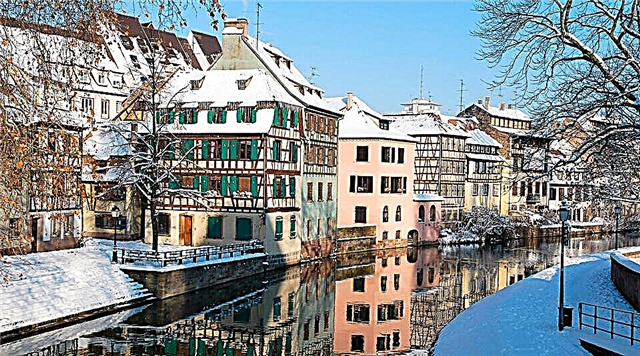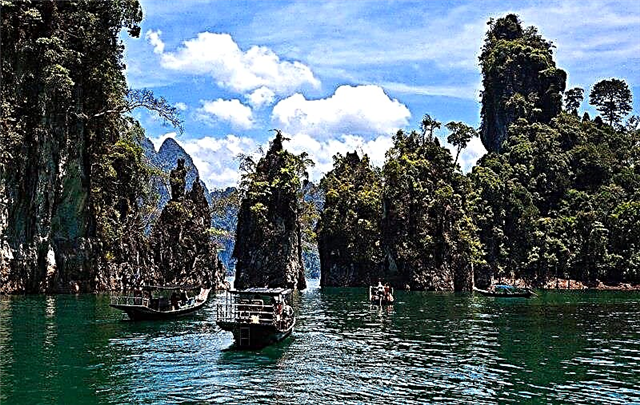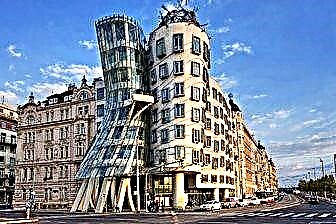For Prague, such epithets as "mystical", "magic", "mysterious" are firmly entrenched. Many tourists fall in love with the capital of Bohemia forever and call it the most beautiful city in Europe. Indeed, there is something magical about the gloomy Gothic castles, winding alleys and ancient cathedrals of Prague.
Guests of the city will enjoy not only original excursions around the city at night, a visit to the ancient Prague Castle, Charles Bridge and river walks along the Vltava. A trip to Prague is also a unique opportunity to enjoy traditional Czech cuisine and taste incomparable Czech beer, which has been brewed according to old monastery recipes for many centuries.
For fans of spectacles, artists and musicians in medieval costumes have prepared performances, which, like hundreds of years ago, they give in the middle of the city's street squares.

The best hotels and hotels at affordable prices.
from 500 rubles / day
What to see and where to go in Prague?
The most interesting and beautiful places for walking. Photos and a short description.
The Charles Bridge
Medieval town bridge across the Vltava River and connecting Staro Mesto and Mala Strana. Named after Emperor Charles IV. Since its construction in the middle of the XIV century, the structure has served so that the rulers could drive through it to their castle. Since 1974, the bridge has become a pedestrian bridge. Now it is a lively place where tourists walk, paintings by street artists are put up for sale and costume performances are held.

Wenceslas Square
The central square of the Novo Mesto district, the cultural center of Prague, where social and state events are often held. Hotels, famous shops, restaurants, nightclubs and offices of large companies are located along the square. The square is named after the main patron saint of the Czech Republic, St. Wenceslas. Fairs and executions have been held here since the 14th century. Gradually, Wenceslas Square was surrounded by houses of artisans and merchants.

Old Town Square
The main square of the city in the Staro Mesto district, where life has been in full swing since the 12th century. Back in those early days, there was a large market here, where various goods were delivered along the Vltava. The ancient buildings surrounding the square are very well preserved, as they managed to avoid large-scale destruction during the Second World War (except for the Town Hall building). Thanks to this, today tourists can admire the wonderful examples of the Gothic and Baroque.

Old Town Hall and Astronomical Clock
After Staro Mesto was recognized as a city, according to the laws of the 13th century, it was necessary to build a town hall where the city government could be located. But its own town hall appeared in Prague only in the XIV century. For 700 years of its existence, it has grown significantly, as many outbuildings have appeared. On the ancient town hall tower there is a working Astronomical Clock from the beginning of the 15th century - a unique creation of watchmakers with many dials built into each other.

Tyn temple
A picturesque Gothic cathedral, a real gem of the Old Town Square. The construction of the temple began in the XIV century, it took more than 160 years to build it. The ashes of significant historical figures are buried inside. Two 80-meter towers rise above the temple, from which the gloomy breath of the Middle Ages breathes. Inside there are a couple of dozen altars, distinguished by their rich decoration and luxury.

Church of St. Nicholas
The main temple of the Czechoslovak Hussite Church was built in the first half of the 18th century. Although there are many magnificent buildings on the Old Town Square, the Church of St. Nicholas is hard to miss. The statues, stained glass windows and murals are reminiscent of art objects. The organ plays an important role in the interior. There is a lot of gilding and small details around it. And the crystal chandelier of the temple is a gift from the Russian Emperor Alexander II.

Karlštejn Castle
The famous Czech castle is 30 km away. from Prague. It is an almost impregnable fortress, where important government documents, relics, jewelry and symbols of power were kept. The fortification was built by order of the Holy Roman Emperor Charles IV in the middle of the XIV century. The ruler personally supervised the construction and decoration works. Karlštejn remembers the glorious kings of the past and keeps sacred relics within its walls.

Prague Castle
The complex of buildings included in the Guinness Book of Records due to its enormous size (70 thousand square meters). There are historical palaces, ancient cathedrals and chapels, galleries, towers and museums, as well as the famous "Zlata Lane". The government of the Czech Republic sits in Prague Castle. The first settlements existed here in the 9th-11th centuries, as evidenced by excavations. Prague Castle is a “city within a city” and is considered the core of the Czech capital.

Troy castle
Baroque palace on the outskirts of Prague, surrounded by picturesque landscaped gardens. It has an external resemblance to classic Italian villas. At the end of the 17th century, the complex belonged to the aristocratic Stenberg family. Inside there is a collection of 19th century paintings, a wine museum and a collection of oriental ceramics. The most luxurious interior is the Imperial Hall, where you can see frescoes celebrating the deeds of the Habsburg dynasty.

Vysehrad
An ancient castle and defensive structure in the southern part of Prague, erected on a hill. Vysehrad appeared in the 10th century and flourished by the end of the 11th century, but soon fell into decay. It was reborn under Charles IV. Here is the Basilica of St. Peter and Paul, which is associated with the formation of the state of the Czech Republic. In the distant XI century, Prince Vratislav II conceived to build a temple on the model of the main cathedral in the Vatican, but because of the fire, the plan was not fully implemented.

Prague Loreta
A complex of structures around a copy of the hut of the Virgin Mary, where this saint was brought up and grew (according to Christian beliefs). Such "lorets" have become widespread throughout Europe. The Prague house was built in the 17th century in the Baroque style. On its territory there are seven chapels, a clock tower, decorative fountains and galleries. Prague Loreta is a very popular and visited Catholic center.

St. Vitus Cathedral
The main (cathedral) church of the Czech capital is located on the territory of Prague Castle. The cathedral is dedicated to three saints at once: Vitus, Wojtek and Wenceslas. In the 10th century, a small basilica was located on the site of the building, which under Charles IV in the 14th century began to grow and be completed. The cathedral was erected in several stages over almost four centuries. The last works were completed in 1929.

Strahov Monastery
The monastery was built for the monastic order of the Premonstrants in the 12th century. It is located close enough to the Prague Castle, so it could not avoid damage during the Hussite wars, the storming of the fortress during the Thirty Years War and other battles. On the territory of the monastery there is a large library where 2,5 thousand ancient manuscripts are kept, including the Strahov Gospel of the 9th century.

National Theater
The main theater of Prague, which is considered one of the symbols of the national revival of the Czech people. It was built at the expense of the people, since the government of Austria-Hungary did not allocate money. The opening took place in 1881, but soon the theater burned down and reopened in 1883. The building adorns the Vltava embankment and is not inferior in beauty even to the famous Vienna Opera. The interior is designed with grace and luxury.

Rudolfinum
A picturesque building on Jan Palach Square - two in one - a concert hall and a gallery. Named "Rudolfinum" in honor of the Austrian crown prince.The initiator of the construction is the Savings Bank of the Czech Republic. The opening ceremony took place in 1885. For 20 years in the first half of the last century, the parliament sat in this building. In the 90s, reconstruction took place, and the site was handed over to the Czech Philharmonic Orchestra.

National Museum
The building was built in the neo-Renaissance style according to the project of the architect D. Schultz. It houses exhibitions that tell about the history of the Czech Republic. It is proposed to see paleontological and anthropological collections, a library, a collection of coins, medals, sculptures and other materials found during excavations. Apart from the main building, the museum has several branches.

National Technical Museum
Opened in 1908 with the aim of gathering technical achievements from different fields in one place. Among them are photographic art, transport industry, printing craft, metallurgy, astronomy, and military affairs. The exposition is divided into themes and divided into separate rooms. At the beginning of this century, the building and the exhibitions themselves went through a major renovation. The audience was again allowed to enter the museum in 2011.

Museum of communism
The post-war history of Czechoslovakia is something that today's Czechs do not want to forget or repeat. The museum covers the period from the 1948 putsch to the 1989 revolution. Exhibits: photographs, propaganda and motivating posters, busts and statues, authentic interiors, equipment and documents, rocket models, wardrobe items. The names of the halls are also curious: "Dream", "Reality", "Nightmare".

National Memorial to the Heroes of Terror Heydrich
7 Czechoslovak saboteurs in 1942 performed a real feat, killing a prominent Nazi leader Reinhard Heydrich. Their memory was immortalized in the form of a memorial in the Cathedral of Saints Cyril and Methodius. A plaque with information about the soldiers is installed on the building. Nearby there is an embrasure, on which even traces of shots have been preserved. A permanent exhibition was placed in the hall of the temple, and bronze busts and biographies of soldiers were placed in the crypt.

Jewish Museum
More than 100 years ago, the historian August Stein began collecting artifacts from the city's lost synagogues, as well as religious objects important to the Jewish community. The resulting museum has become so vast that it is called the "Jewish city". The attraction includes several synagogues, but only the Spanish one is used for religious purposes. In addition, there are educational and cultural centers.

Franz Kafka Museum
A museum (or rather a traveling exhibition) dedicated to the Czech genius of writing F. Kafka. The exposition contains the first published books of the master, his manuscripts, diaries, sketches and photographs. In the courtyard there is a sculptural group-fountain of rather ambiguous content. It depicts two men relieving themselves on a map of the Czech Republic. There is an opinion that the creator D. Cherny put a political subtext into his creation, however, most believe that this is simple shocking.

Sculpture "Head of Franz Kafka"
A stainless steel art object is installed near the Quadrio shopping center. The sculpture consists of horizontal layers rotating at different speeds. They freeze briefly and fold into a huge head, and then start moving again. The author of the project is David Cherny. He considered that it was not enough to imagine Kafka in static sculpture. The writer was unusual, so you need to be creative to portray him.

Memorial to the victims of communism
A modern monument from 2002, which, according to the idea of the author Zubek, should symbolize the suffering of political prisoners during the reign of the communist government on the territory of the Czech Republic. The memorial features seven male figures descending a staircase. Each next one contains more and more significant defects: cracks, breaks, absence of limbs.

Petrin Tower
A tower erected for the opening of the 1891 Industrial Exhibition. It was nicknamed the "Prague Eiffel Tower". At first, the tower played the role of an observation deck, from where a good view of the city opened up. In the middle of the 20th century, the first antenna for television broadcasting was placed in it, which led to an increase in the length of the structure by 20 meters. The total height of the Petrin Tower is 60 meters.

Zizkov TV Tower
A working television tower built at the end of the 20th century. The height of the structure is more than 200 meters, it can be clearly seen from any part of Prague. The building is quite unusual, it has been included in the lists of the ugliest buildings in the world more than once, then in the ratings of the most original. The observation deck is at a height of 93 meters. The tower also has a panoramic restaurant, bar and hotel, where newlyweds like to stay.

Powder tower
An old Gothic building right in the middle of the street near the metro station "Namesti Republiki". The city gates once stood in its place. In the 18th century, a gunpowder warehouse was located here, which is where the name of the building comes from. Nowadays, there is a photo exhibition inside and an observation deck is open, from where you can take several spectacular pictures. The Powder Tower reminds tourists of the dark years of the Middle Ages with all its appearance.

Community House
A building erected on the site of an old royal residence. After the completion of the construction, meetings and exhibitions were held here. This place is of particular importance for the country, since here in 1918 the independence of the Czech Republic was declared. Nowadays, concerts are held on the territory of the Public House. Every spring, the Prague Spring music festival is held here, which brings together bands from all over the world.

Jewish Quarter (Josefov)
Quarter on the site of the 11th century Jewish ghetto. Until the beginning of the 18th century, it was surrounded by a wall, but by the will of Joseph II, the barriers were demolished. The quarter was completely rebuilt at the end of the 19th century, only a few old buildings and synagogues, as well as the old Jewish cemetery, have survived. Before the events of the Second World War, more than 100 thousand people lived here, now the population is only a few thousand inhabitants.

Vinarna Devil
The narrowest Prague street, or rather a narrow alley, which is only 70 cm wide. Only one person can pass here at a time. To prevent people from colliding, there are pedestrian traffic lights at both ends of the street. During the high tourist season, many people gather around these traffic lights, waiting for their turn. The name comes from the winery, which is located near the alley.

Golden Lane
A street-museum in Prague Castle, lined with "toy houses", where fairy-tale characters live. In the 16th century, jewelers and chasers who worked for the Treasury lived here (hence the name of the street). According to one of the popular legends, alchemists also settled on Golden Lane, whose main job was to transform any suitable material into gold. The place became uninhabited after the Second World War; all the houses were adapted for museums.

Havel market
Food and souvenir market mainly designed for tourists. Here you can buy flowers, berries, honey, sweets, pastries and much more. A wide variety of souvenirs is also presented: wood and leather goods, puppet dolls, Bohemian glass, jewelry. The market has existed since the 13th century; in the Middle Ages, Germans lived in the vicinity, who gave the name to the market in honor of St. Havel.

Prague Zoo
The zoo contains over 400 species of animals, some of which are recognized as endangered. There is a petting zoo and a children's railway on site. In numerous pavilions, the atmosphere of different climatic zones has been recreated. The most impressive is the Indonesian Jungle Pavilion, built in 2002. Galapagos turtles live only in the Prague Zoo, the only one in all of Europe.

John Lennon Wall
Wall with numerous graffiti, created by fans of the Beatles and D. Lennon. There is a version that it arose as a protest against the communist authorities. The monument symbolized a free spirit, striving for independence and freedom. The authorities tried to demolish the wall several times, but to no avail. It should be noted that the legendary musician himself never visited Prague.

Dancing House
An interesting and non-standard architectural solution implemented by F. Gary and V. Milunich. The house is located in the center of Prague, on the ground floor there is a French restaurant. The building is sometimes called "glass" and "drunken house". The Dancing House is built in a modern deconstructivist style that uses asymmetric and in places irregular shapes. At first, the townspeople did not accept the innovative building, but pretty soon it became a "highlight" of Prague.

Vltava river
The longest river in the Czech Republic. "Vltava" in translation from the ancient dialect means "wild water". Within the city, several bridges are thrown across the river, the most beautiful of them is the Charles Bridge. During the warmer months, there are many hiking trails for tourists. From the boat you can admire the magnificent city architecture and see Prague from a slightly unusual perspective.


